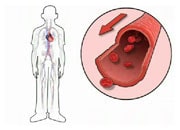Exercise testing
Excercise testing helps your doctor find out how well your heart deals with exercise or stress. The test involves exercising on a treadmill while your heart rate, breathing, blood pressure and the electrical activity in your heart are all monitored.
You are connected to monitoring equipment and then asked to walk slowly on a treadmill or cycle on a stationary bicycle. The speed is increased to a faster pace and the treadmill is tilted to produce the effect of going up a small hill (on a bike, the load on the pedals increases continuously or in a stepwise manner). You may also be asked to breathe into a tube for a couple of minutes.
The tests can be stopped at any time if needed. Afterwards, you will sit or lie down to have you heart and blood pressure checked.
Sometimes, in addition to an ordinary exercise test, you will be asked to wear a mask to collect the air you breathe out to measure how much you are breathing and how fast your body is consuming oxygen. This is called a cardiopulmonary exercise test.
As your body works harder during the test it requires more oxygen, so the heart must pump more blood. The test can show if your blood supply is reduced in the arteries supplying your heart. It also helps to assess your exercise capacity and decide the type and level of exercise that is best for you.
The exercise test is useful in diagnosing coronary artery disease, a major risk factor for heart failure, and for evaluating your exercise capacity.
 |
| © Siemens Patient during an exercise test |
Return to Common tests for heart failure




















